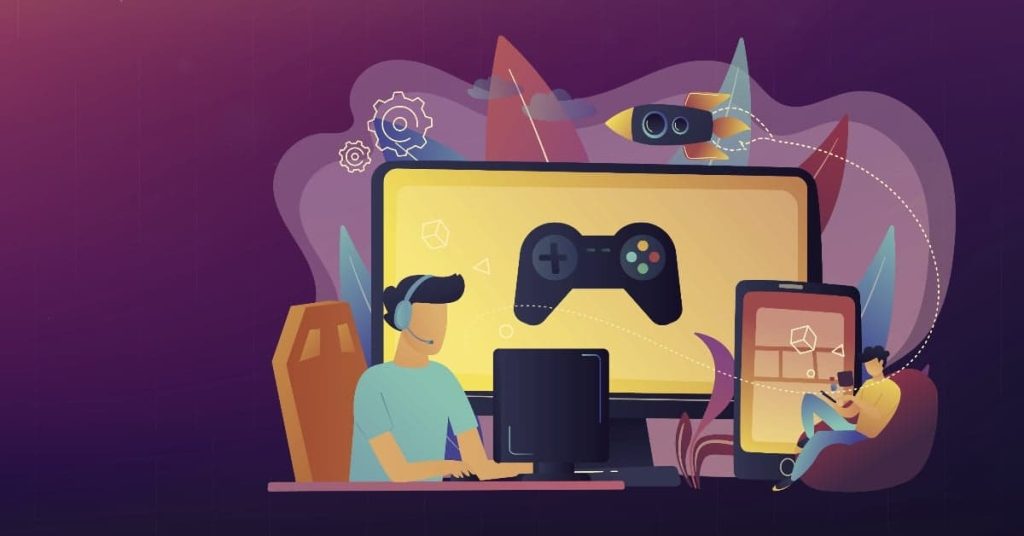The journey of online gaming is a fascinating story of technological innovation, cultural shifts, and an ever-growing community of players worldwide. From the early days of consoles limited to local multiplayer experiences, to today’s vast cloud-powered ecosystems where millions can connect anytime, anywhere—the evolution of Sabatoto gaming reflects the broader transformation of digital entertainment. This article explores how online gaming has developed over the decades, the milestones that shaped it, and where the future may be headed.
The Early Days: Console Beginnings and Local Multiplayer
Online gaming’s roots lie not in the internet, but in the console’s ability to bring friends and family together physically. Classic consoles like the Nintendo Entertainment System (NES) and the Sega Genesis of the late 1980s and early 1990s primarily supported local multiplayer. Players would sit side-by-side, connecting controllers to compete or cooperate on the same screen.
Early attempts at online connectivity were limited and experimental. The Sega Dreamcast, released in 1999, was one of the first consoles to feature built-in modem support, allowing players to connect to the internet and play games online. Titles like Phantasy Star Online introduced console gamers to the thrill of interacting with others across the globe. However, this was still niche due to slow internet speeds and limited infrastructure.
The Rise of Broadband and Dedicated Servers
As broadband internet became more widespread in the early 2000s, online gaming began to take off in earnest. Microsoft’s Xbox Live service, launched in 2002 with the original Xbox, was a game-changer. It provided a robust, unified online platform where players could create profiles, add friends, and play competitive multiplayer games with minimal hassle.
Xbox Live’s success was mirrored by Sony’s PlayStation Network (PSN), introduced with the PlayStation 3 in 2006, and Nintendo’s later entry with the Nintendo Network. These platforms brought online multiplayer into the mainstream, enabling a generation of gamers to battle or collaborate in popular titles like Halo 2, Call of Duty, and World of Warcraft on PC.
The mid-2000s also saw the emergence of dedicated game servers hosted by companies or communities, which improved gameplay stability and reduced cheating. These servers allowed games like Counter-Strike and Battlefield to thrive with large, competitive online communities.
The Era of Multiplayer Massively Online Games (MMOs)
Parallel to console online services, massively multiplayer online games (MMOs) were redefining what it meant to game with others. Titles like EverQuest (1999) and World of Warcraft (2004) created vast virtual worlds where thousands of players could coexist, form guilds, and embark on quests together.
MMOs introduced social aspects beyond just gameplay—players could chat, trade, and even form friendships that transcended the digital realm. These games were early examples of online gaming becoming a social platform, setting the stage for the connected gaming culture we see today.
The Social Gaming Boom and Mobile Integration
By the late 2000s and early 2010s, online gaming expanded beyond traditional consoles and PCs. The rise of smartphones brought games like Angry Birds and Clash of Clans, which offered asynchronous multiplayer or competitive leaderboards.
Social media platforms such as Facebook also introduced casual games like FarmVille, connecting millions through simple, accessible gaming experiences. This era democratized online gaming, making it more inclusive and social, appealing to demographics beyond hardcore gamers.
The Streaming Revolution and Cloud Gaming
The latest leap in Macauindo gaming technology is cloud gaming, sometimes called gaming as a service. Cloud gaming allows players to stream games directly to their devices without needing powerful hardware. Instead of installing games locally, players connect to remote servers where the games run, and the video feed streams back to their screen.
Pioneers like Google Stadia, NVIDIA GeForce Now, Microsoft’s Xbox Cloud Gaming (part of Xbox Game Pass Ultimate), and Sony’s PlayStation Now have showcased the potential to make high-quality games accessible on phones, tablets, laptops, and low-end PCs.
Cloud gaming removes traditional barriers like expensive consoles or PCs and game downloads, offering instant play and seamless multiplayer experiences across devices. It also opens new doors for developers, enabling dynamic content updates and real-time multiplayer matchmaking.
The Impact of Cross-Platform Play
One of the biggest cultural shifts enabled by evolving online technology is cross-platform play. Previously, gamers were siloed by their device—PlayStation players couldn’t play with Xbox players, and PC gamers were left out of console communities.
Today, many popular games, including Fortnite, Call of Duty: Warzone, and Minecraft, support cross-play. This means friends can team up or compete regardless of their gaming platform, broadening communities and fostering greater inclusivity.
Cross-platform play relies heavily on robust online infrastructures and cloud services to synchronize gameplay and player data across different ecosystems.
Challenges and Considerations
While online gaming has grown tremendously, it has faced challenges along the way:
- Latency and Connectivity: Online play demands low latency and stable connections. While broadband improvements have helped, cloud gaming is still limited by internet speed and data caps.
- Security and Fair Play: Cheating, hacking, and toxic behavior threaten fair competition and enjoyment. Platforms have invested in anti-cheat software and community moderation.
- Monetization Models: The rise of free-to-play games with microtransactions and loot boxes has sparked debates on fairness and consumer protection.
- Digital Divide: Access to high-speed internet remains uneven globally, creating disparities in who can fully enjoy online gaming.
What the Future Holds
The future of online gaming looks exciting and transformative:
- 5G and Edge Computing: Faster, more reliable wireless networks will reduce latency and enhance mobile cloud gaming.
- Virtual Reality (VR) and Augmented Reality (AR): Immersive technologies will deepen social interactions and gameplay experiences.
- Artificial Intelligence: AI-driven matchmaking, dynamic content creation, and intelligent game worlds will make online play more personalized.
- Metaverse and Persistent Worlds: Online games are evolving into persistent virtual spaces where gaming, socializing, work, and commerce blend seamlessly.
Conclusion
From the humble beginnings of local multiplayer on classic consoles to the sophisticated cloud-powered platforms of today, online gaming has revolutionized how we play and connect. It has transformed from a niche pastime into a global cultural phenomenon that breaks geographical boundaries and brings people together.
As technology continues to advance, online gaming will become more accessible, immersive, and social than ever before. Whether you’re a casual player, competitive gamer, or just someone looking to hang out with friends in a virtual space, the evolution from console to cloud promises a future full of endless possibilities.

